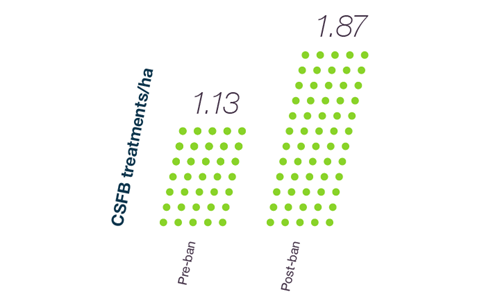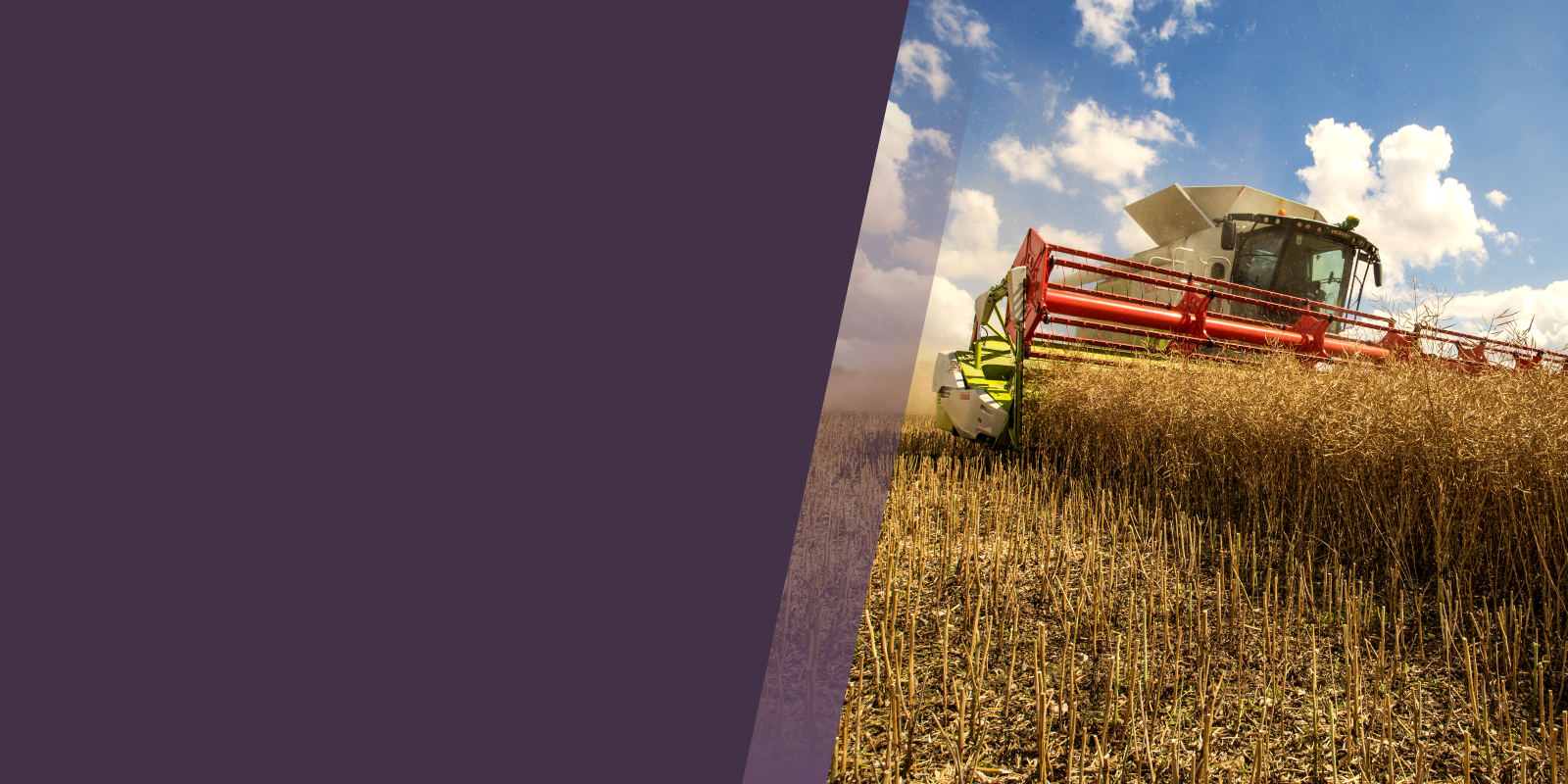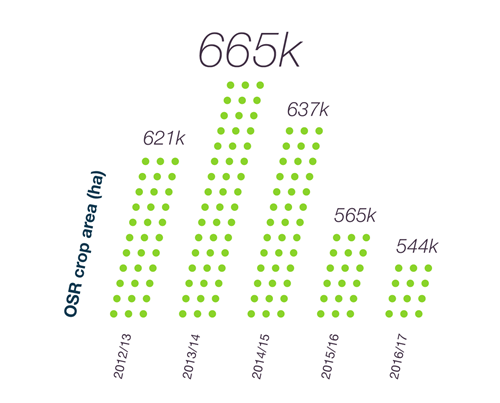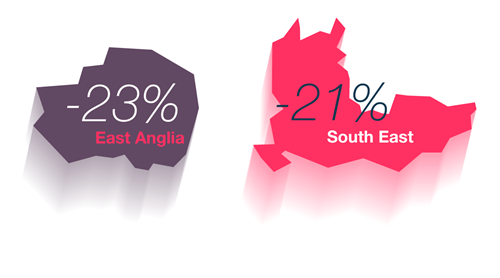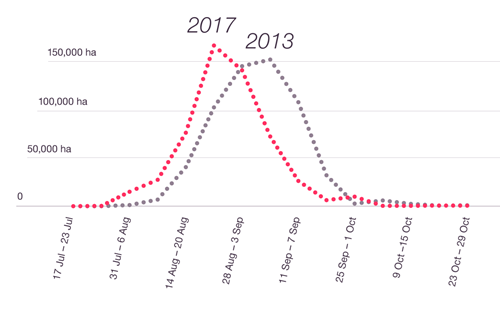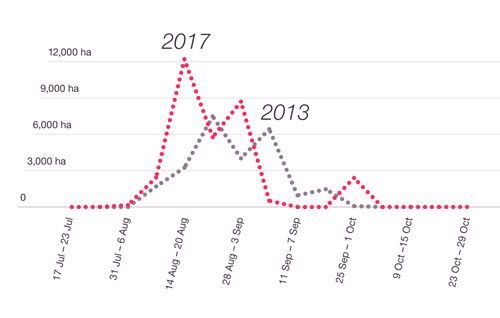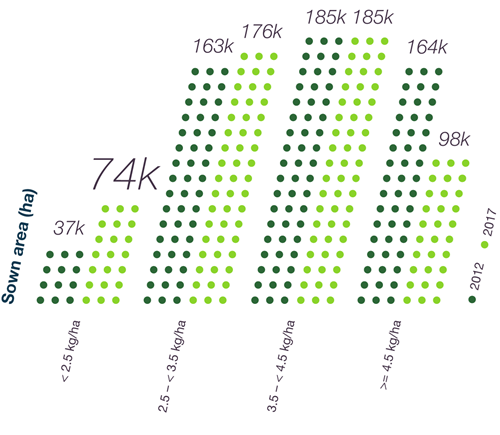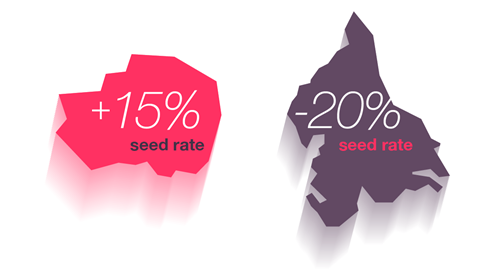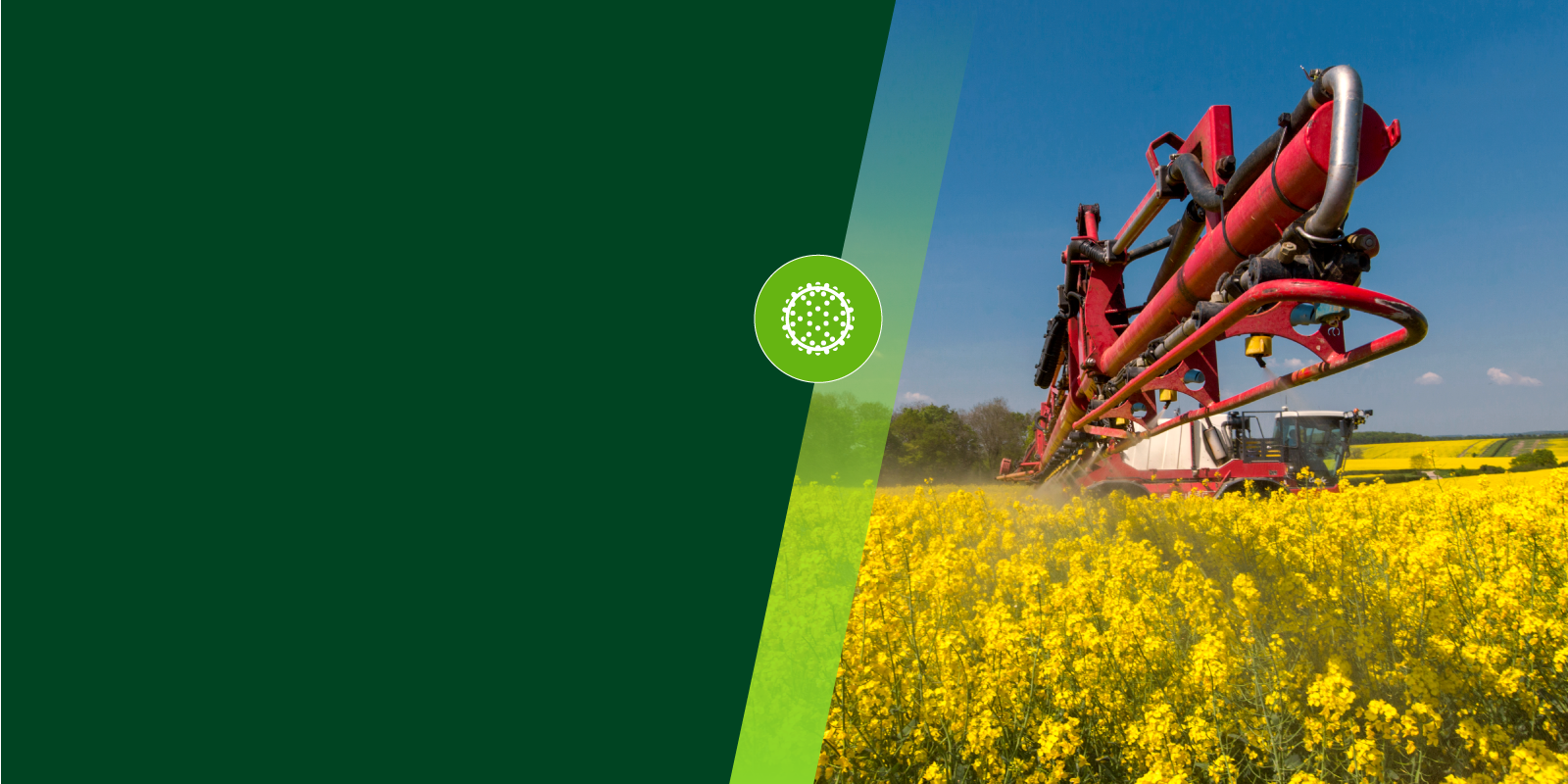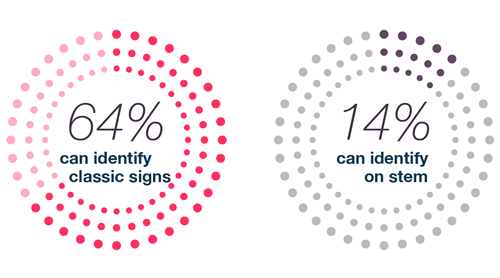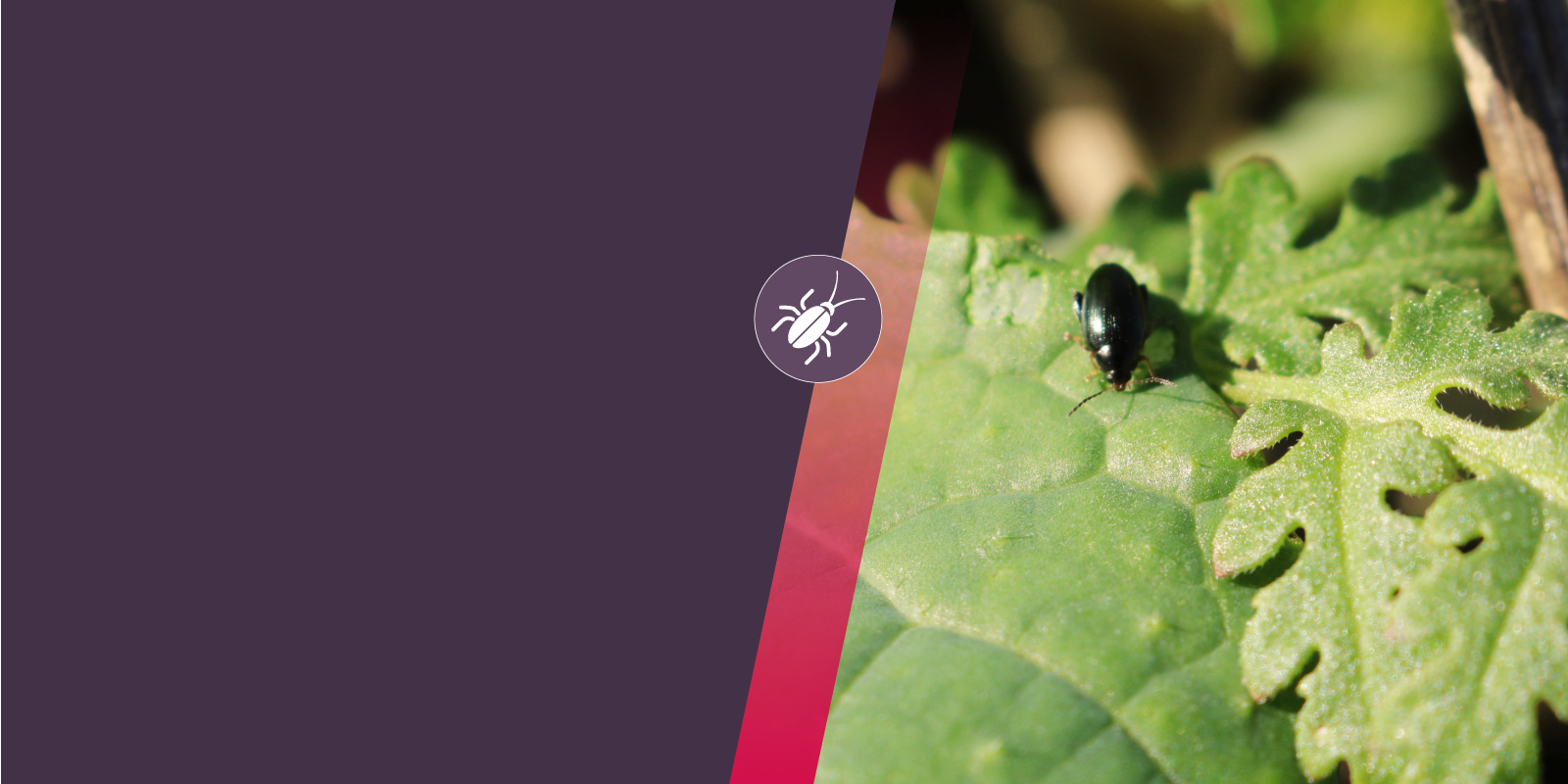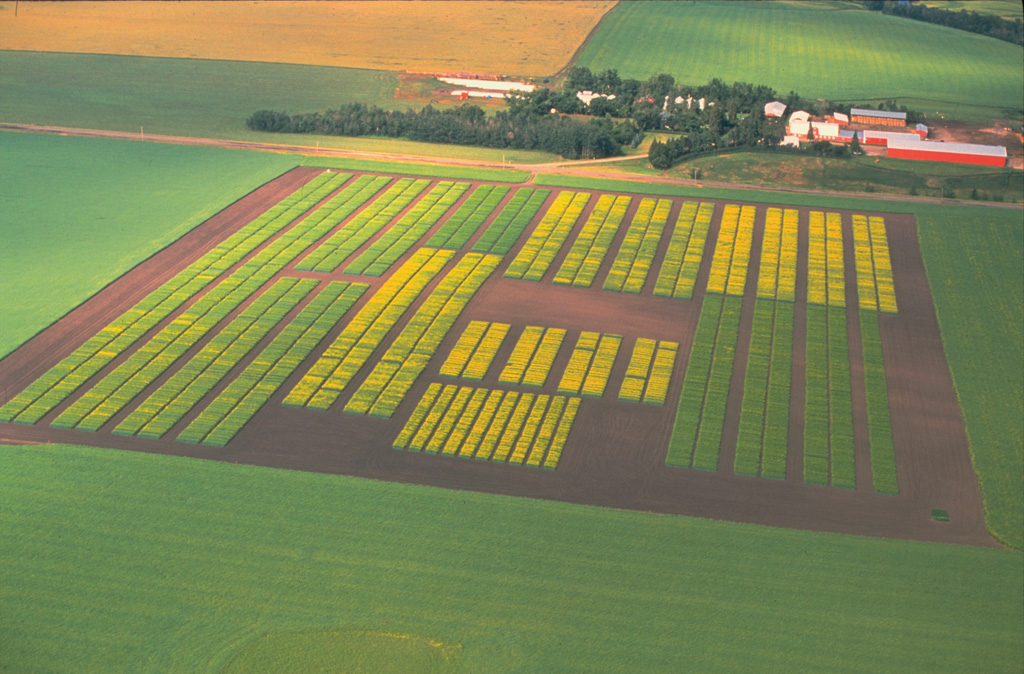Ban on neonicotinoids has led to increased use of foliar insecticide because of cabbage stem flea beetle
Foliar insecticide use before and after the neonicotinoid ban was introduced is an interesting area. When you look at total insecticide use in OSR crop in the three years before the ban and the four years after the ban, judged by superdeveloped hectares (SDA), then the amount of insecticide has actually dropped post-ban.
But of course, so has the area grown – quite significantly. So, dividing the superdeveloped hectares by the area grown in each year starts to show a slightly different picture – one in which insecticide use has increased from 2.8 treatments/year to 3.0.
Not much difference? We did a bit more digging. Breaking down the data in smaller chunks, you can to some extent break the season into three sections – August & September for flea beetle, October to December for aphid control, and March to June for spring pests, such as pollen beetle and pod midge, etc.
This starts to show a slightly different picture – in the three years pre-ban, there was just over one treatment (1.13) for flea beetle on average across the area, since the ban it is now just under two treatments/total area (1.87). At the same time, the area treated for aphids that transmit turnip yellows virus has decreased (October–December) slightly from 0.99 to 0.72 treatments/total area.
Of course, there will be some noise in this data, some crops in September will be treated for aphids, others in October for flea beetle potentially, and some for both, which with the increase in area treated earlier may account for the reduction in area treated in the later months. But the data is clear – foliar insecticide use in the autumn has increased post-ban.
When this data is broken down regionally, it is also clear that more insecticide is being used by growers in East Anglia, the South-East and East Midlands. Typically, they are applying over the average 3 treatments/area in a season, whereas growers in the other areas are below the 3 treatment national average.
There is some good news: the data appears to suggest the drive to minimise pollen beetle sprays in the spring, and the change in thresholds has had an effect. Since harvest year 2012, the amount used has steadily dropped to a low of just half the OSR in total receiving an insecticide spray between March and June.
